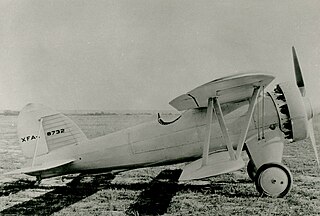
The General Aviation XFA was an American biplane fighter aircraft built by the General Aviation Company for the United States Navy.

The Boeing XF6B-1 / XBFB-1 was Boeing's last biplane design for the United States Navy. Only the one prototype, Model 236, was ever built; although first flying in early 1933, it rammed into a crash barrier in 1936 and the design was not pursued further.

The Vought XF2U was a prototype biplane fighter aircraft evaluated by the United States Navy at the end of the 1920s, but was already outclassed by competing designs and never put into production.
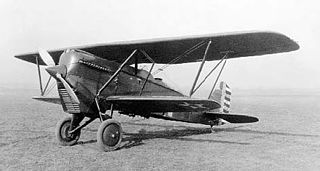
The Boeing XP-7 was a prototype United States biplane fighter of the 1920s.
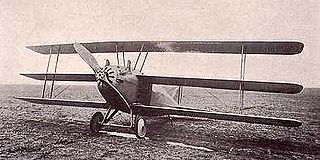
The Curtiss 18T, unofficially known as the Wasp and by the United States Navy as the Kirkham, was an early American triplane fighter aircraft designed by Curtiss for the US Navy.

The Eberhart XFG was an American single-seat experimental ship-borne biplane fighter aircraft developed for the United States Navy in 1927 by the Eberhart Aeroplane and Motor Company. The sole prototype was rebuilt into the XF2G with the addition of a single float and a different engine, but the aircraft was destroyed in a crash in 1928, and the type did not enter production.
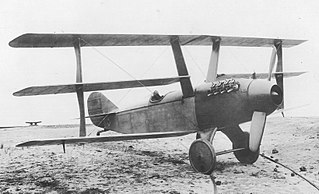
The Curtiss Model S was a single-seat fighter aircraft.

The Curtiss PN-1 was an American single-seat night fighter biplane built by Curtiss Aeroplane and Motor Company using blueprints from the Engineering Division of the United States Army Air Service.

The Curtiss XF13C was a carrier-based fighter aircraft built by Curtiss Aeroplane and Motor Company.

The Douglas XFD was a carrier-based biplane fighter aircraft designed for the United States Navy, and the first fighter to be built by the Douglas Aircraft Company. A victim of changing requirements, no production was undertaken.

The Loening PA-1 was an American fighter aircraft prototype built by Loening Aeronautical Engineering.
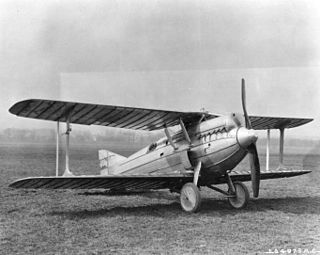
The Gallaudet PW-4 was a prototype biplane fighter aircraft built by the Gallaudet Aircraft Company. It was one of the last projects by the company before it was taken over by Consolidated Aircraft. It was all-metal and powered by a Packard 11A-1237 engine. Three prototypes were ordered by the USAAC, but the company could afford to build only one, which never flew.
The Martin KF-1 was an American biplane fighter aircraft designed and built by Captain James V. Martin.

The Navy-Wright NW series, also called the Mystery Racer were racing aircraft built by Wright Aeronautical Corporation at the request of the US Navy. Although innovative, both prototype racers were lost before achieving their true potential.
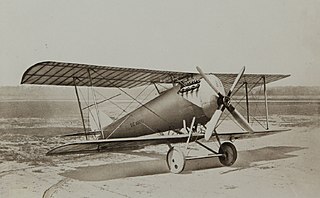
The Pomilio FVL-8 was a biplane fighter aircraft built by Fabbrica Aeroplani Ing. O. Pomilio for Engineering Division of the Aviation Section, U.S. Signal Corps.

The Orenco D was an American biplane fighter aircraft, designed by Orenco and built by Curtiss Aeroplane and Motor Company. It was the first fighter type of completely indigenous design to enter US military service.

The Thomas-Morse MB-2 was an open-cockpit biplane fighter manufactured by Thomas-Morse Aircraft for the U.S. Army Air Service in 1918.

The Northrop XFT was an American prototype fighter aircraft of the 1930s. A single engined low-winged monoplane, it was designed and built to meet a United States Navy order for an advanced carrier based fighter. It exhibited poor handling, and was rejected by the Navy, the single prototype being lost in a crash. A variant, the Northrop 3A, also was unsuccessful.
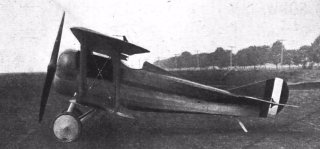
The Orenco B was a prototype American fighter aircraft of World War I. It was a single-engined, single-seat biplane that flew in 1918. Although it demonstrated good performance, it did not enter large scale service.

The Thomas-Morse TM-24 was a prototype American two-seat observation aircraft of the 1920s. A single example was built in 1925, but no production followed.



















